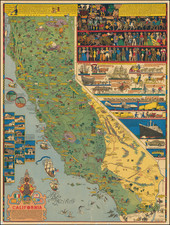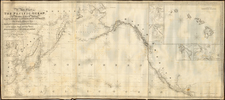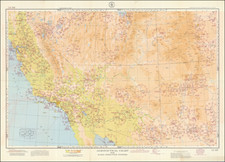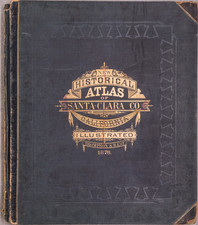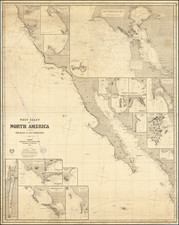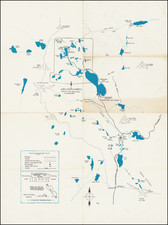Early survey map showing the tide lands owned by various members of the Banning family in Rancho Palos Verdes and the town of Wilmington, originally prepared to illustrate a dispute involving the Banning family members in the early 1890s and apparently later copied by the Southern Pacific Railroad shortly.
In addition to the town and the Banning land ownership claims, the map locates state Tidelands and the location of the Southern Pacific RR line and its Depot in Wilmington.
The tidelands shown were originally acquired by Phineas Banning (1830 - 1885), who is often referred to as "The Father of the Port of Los Angeles." Banning was one of the founders of the town of Wilmington.
The land shows the Banning family lands along the tidelands in the eastern part of San Pedro Harbor circa 1890, a at time when the heirs of Phinneas Banning were engaged in a legal dispute which resulted in litigation. Some of the Tidelands in question were controlled by Banning pursuant to leases which allowed Banning to expand his shipping and staging businesses. These leases would later be terminated by the state pursuant to its powers to control the Tidelands and given to the City of Los Angeles in 1911, in order to allow the City to expand the Port of San Pedro.
The tidelands shown were originally acquired by Phineas Banning (1830 - 1885), who is often referred to as "The Father of the Port of Los Angeles." Banning was one of the founders of the town of Wilmington.
Besides operating a freighting business, Banning operated a stage coach line between San Pedro and Wilmington, and later between Banning, California, which was named in his honor, and Yuma, Arizona. During the Civil War, he ceded land to the Union Army to build a fort at Wilmington, the Drum Barracks. He was appointed a Brigadier General of the First Brigade of the militia, and used the title of general for the rest of his life.
Banning arrived in San Pedro, California, in 1851. Banning first worked in the fishing village of San Pedro, initially as a store clerk, and later as a stagecoach driver on the line that connected the hamlet with the pueblo of Los Angeles. Banning began his own staging and shipping company. By the 1860s, Banning wagons were traveling to Salt Lake City, the Kern River gold fields, the new military installation at Yuma, Arizona, the Mormon settlement at San Bernardino, and in an arc around the Southern California region.
Banning also began expanding the harbor and docks at San Pedro from their beginnings as illegal exchange sites for mission contraband during the Spanish and Mexican eras, and made them efficient enterprises. In the late 1850s Banning and a group of Southern California investors purchased 640 acres of land adjacent to San Pedro for port expansion. The land purchase was incorporated as Wilmington, and his facility became known as Banning's Landing. Banning invested the profits from his trade networks into the development of a more sophisticated port complex and for the creation of roads, telegraphs, and other connections to Los Angeles.
In 1859, the first ocean-going vessel anchored in Los Angeles-Wilmington harbor, and the 1860s saw the beginning of small-scale maritime trade between San Pedro and ships anchored in the deeper parts of the harbor. After government-funded dredging made a deep water harbor and breakwater a reality, the port continued to grow. Banning became a California state senator in the 1870s, and campaigned for greater transportation connections to the city of Los Angeles and the growing port, his personal project. Banning eventually pushed through a plan for a small railroad linking Wilmington/San Pedro with the main city of Los Angeles, effectively halving the time necessary for the trip, but the plan was short-lived.
The Southern Pacific Railroad began building track to connect Southern California to the greater national railroad lines, and demanded much of Los Angeles' prime real estate, an enormous sum of money, and Banning's small connector line railroad in exchange for adding Los Angeles as a terminus on the railroad. Realizing that Los Angeles would wither into nothingness if the company bypassed it, the city complied and Banning surrendered his railroad. Banning would go on to acquire additional tracts of land in the tidelands pursant to leases, which would later be terminated by the State of California pursuant to its Tideland powers.









